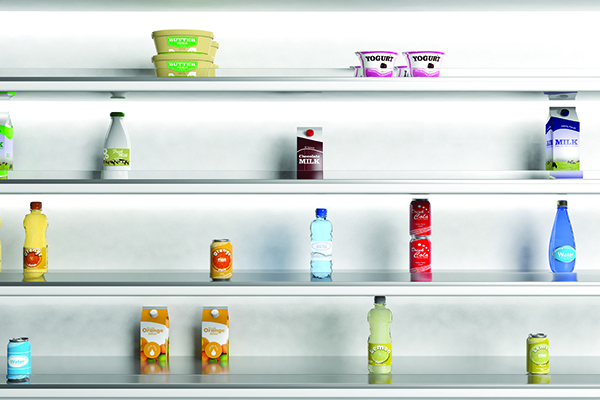Sorry, but your login has failed. Please recheck your login information and resubmit. If your subscription has expired, renew here.
July-August 2020
Supply chains have been in the news a lot the last couple of months, and not always for the right reasons. It seems as if the two words most often associated with supply chains these days are broken or failed, and supply chain is used to explain the shortages of everything from toilet paper to rib-eye steaks to personal protection equipment. Pundits question whether Amazon’s inability to make good on same-day and next-day deliveries or keep its endless shelves stocked during a pandemic will cost it market share. Browse this issue archive.Need Help? Contact customer service 847-559-7581 More options
However, the seasonal calendar is not the only influencer of inventory levels. There’s also the matter of promotions—every inventory manager’s favorite. A typically slow-moving salad dressing can become a shooting star overnight when displayed and promoted aggressively. Not to mention promotions for non-food retail items from shampoo to toilet paper, which actually doesn’t need a pandemic to fly off the shelves.
Seasonality and promotions are too often the bane of major investments that companies make to optimize their inventories. But they are also important components of the food retail business and not going away anytime soon. Competition is especially acute in the low margin world of food retail. There is always a fight for market share and profits despite a sliding scale of discounts and other forms of price reductions. It isn’t easy to be careful out there while food retailers battle to differentiate themselves, attract new customers and make a lasting impression on consumers as having the lowest prices every day.
There’s also the matter of trying to keep shelves stocked under all of these shifting conditions with all of those key SKUs. No customer wants to see an empty shelf where the last ingredient in the perfect holiday recipe should be on display. If that happens often enough, shoppers just aren’t coming back. They’ll try some other store. We’ve all been there.
Most retailers try to address these concerns with inventory policies that set safety stock levels based on an ABC analysis of three item classes (A, B and C). The most common method of classification is based on Pareto’s principle that 80% of sales are typically generated from the top 20% of SKUs.
However, this approach often fails to alleviate the immense pressure on inventory managers to always have enough of key items in stock. Poor availability during a promotion could lead to a permanent loss of customer trust. As a result, both demand management teams and retail stores often disregard established inventory policies in favor of a don’t-run-out mentality. The compulsion to order a little extra inventory (in some cases, up to 20% above forecast) is very real.
Unfortunately, this practice places intense pressure on the supply chain to maintain high availability. Worse yet, such emotional inventory management practices during critical selling periods often result in inventory peaks that greatly exceed actual demand of these items. And the cleanup afterward is often painful.

This complete article is available to subscribers only.
Log in now for full access or start your PLUS+ subscription for instant access.
SC
MR
Sorry, but your login has failed. Please recheck your login information and resubmit. If your subscription has expired, renew here.
July-August 2020
Supply chains have been in the news a lot the last couple of months, and not always for the right reasons. It seems as if the two words most often associated with supply chains these days are broken or failed, and… Browse this issue archive. Access your online digital edition. Download a PDF file of the July-August 2020 issue.However, the seasonal calendar is not the only influencer of inventory levels. There’s also the matter of promotions—every inventory manager’s favorite. A typically slow-moving salad dressing can become a shooting star overnight when displayed and promoted aggressively. Not to mention promotions for non-food retail items from shampoo to toilet paper, which actually doesn’t need a pandemic to fly off the shelves.
Seasonality and promotions are too often the bane of major investments that companies make to optimize their inventories. But they are also important components of the food retail business and not going away anytime soon. Competition is especially acute in the low margin world of food retail. There is always a fight for market share and profits despite a sliding scale of discounts and other forms of price reductions. It isn’t easy to be careful out there while food retailers battle to differentiate themselves, attract new customers and make a lasting impression on consumers as having the lowest prices every day.
There’s also the matter of trying to keep shelves stocked under all of these shifting conditions with all of those key SKUs. No customer wants to see an empty shelf where the last ingredient in the perfect holiday recipe should be on display. If that happens often enough, shoppers just aren’t coming back. They’ll try some other store. We’ve all been there.
Most retailers try to address these concerns with inventory policies that set safety stock levels based on an ABC analysis of three item classes (A, B and C). The most common method of classification is based on Pareto’s principle that 80% of sales are typically generated from the top 20% of SKUs.
However, this approach often fails to alleviate the immense pressure on inventory managers to always have enough of key items in stock. Poor availability during a promotion could lead to a permanent loss of customer trust. As a result, both demand management teams and retail stores often disregard established inventory policies in favor of a don’t-run-out mentality. The compulsion to order a little extra inventory (in some cases, up to 20% above forecast) is very real.
Unfortunately, this practice places intense pressure on the supply chain to maintain high availability. Worse yet, such emotional inventory management practices during critical selling periods often result in inventory peaks that greatly exceed actual demand of these items. And the cleanup afterward is often painful.
SC
MR


Latest Supply Chain News
- Balanced supply chain management Part 4: The key—leading beyond the silo
- Managing inbound freight: What has changed in two decades?
- Inbound freight: Often a missed opportunity
- Aggregators sitting on the throne of Africa’s e-commerce supply chains: What lessons can we learn?
- Cross-border transport 2024: Navigating the surge
- More News
Latest Resources

 Explore
Explore
Procurement & Sourcing News
- Aggregators sitting on the throne of Africa’s e-commerce supply chains: What lessons can we learn?
- Cross-border transport 2024: Navigating the surge
- Benchmarking the complexity of ESG reporting
- Looking back at NextGen 2024
- The Corporate Sustainability Due Diligence Directive
- How to make your CFO a supply chain superfan
- More Procurement & Sourcing
Latest Procurement & Sourcing Resources

Subscribe

Supply Chain Management Review delivers the best industry content.

Editors’ Picks





